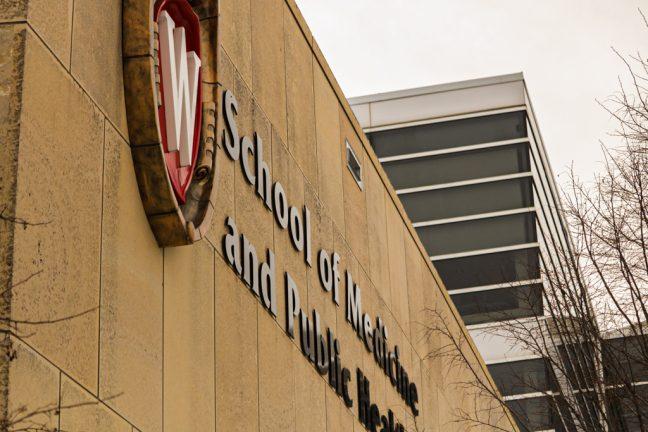A recent resolution proposed by the Dane County Board of Supervisors Oct. 15 would create Wisconsin’s first Regional Transit Authority in Madison and the surrounding areas. This proposal has a long history in Madison, as it is more than 20 years in the making.
Past
According to Dane County Board of Supervisors Chair Scott McDonell, talk of an RTA began about 20 years ago with a commuter rail study committee that looked at connecting the major rails that run through the Isthmus into neighboring towns under one authority.
“There’s no way to govern that system — no money, no governance and no way to get all the Stoughtons and Madisonians at the same table. We started looking around and saw that everyone had a Regional Transit Authority — big cities and communities,” McDonell said.
According to Madison Mayor Dave Cieslewicz’s Chief of Staff Janet Piraino, bus routes and other modes of public transportation currently stop at the borders, unless an agreement is made between the municipalities. The RTA would create a way to coordinate and manage transportation on a regional level instead of a municipal level.
“Dane County adds more people (population) every year than any other Wisconsin county. More people means more cars, and potentially more congestion,” Dane County Executive Kathleen Falk spokesperson Josh Wescott said in an e-mail to The Badger Herald. “Complicating this growth is geography. … The center of the county’s largest city (Madison) is locked between two lakes. There isn’t any room to add roads through the heart of the city.”
Two big lines of particular interest include the lines running from Mazomanie through the Isthmus to Sun Prairie, and the line that runs from Deforest through the Isthmus down to McFarland and Stoughton.
According to McDonell, the big thing holding up the development of the RTA was the Republican-dominated Wisconsin state Legislature, which opposed the RTA due to the needed tax increase.
“We desperately needed legislation, but could never get it because Republicans controlled at least one of the three branches — not all of them, but enough of them that we couldn’t do anything,” McDonell said. “We had to wait until the Democrats controlled all three.”
Legislation was essential to starting the RTA, because without approval from the Legislature and the governor, the Dane County Board of Supervisors could not receive federal funding to upstart the RTA.
After Democrats won the majority in the Assembly and Senate in November 2008, the Dane County Board of Supervisors had the conditions they needed and in his 2010-11 fiscal budget, Gov. Jim Doyle included the creation of Madison’s RTA as well as one for Milwaukee, which passed both houses along with the budget.
“I know there have been many discussions for a number of years about vision/strategies for transportation options in this quickly growing county. Given the importance of these decisions, it’s understandable this homework process has been deliberate, detailed and thorough,” Wescott said in an e-mail to The Badger Herald. “Creation of the RTA by the state Legislature and Governor this year was a very important next step in the process.”
Present
Soon after the passage of the state budget, McDonell proposed the creation of the RTA’s governing board to the Dane County Board of Supervisors Oct. 15.
The board, if passed, would consist of nine appointed members — two from the city of Madison, two from Falk, one from the governor, one from any city with a population of more than 50,000 — which includes Middleton, Fitchburg, and Sun Prairie — and finally one that represents the rest of the Dane County cities and villages.
One of the reasons for this division of votes stems from smaller community concern regarding the RTA and the possibility of being dwarfed by Madison and its needs.
According to McDonell, Stoughton has been skeptical as to what is being asked of them and what benefits they will receive from the RTA, whereas Fitchburg and Middleton are big supporters.
“Some communities will benefit more from others and we really can’t come up with a system where that doesn’t happen to some degree,” McDonell said. “[The smaller communities] just need to see what they are going to get out of it. … The bill did address that as they are very ill-represented on the makeup of the board.”
Future
Before the governing board is voted upon at the Dane County Board of Supervisors Nov. 5, a listening session will be held Monday to address concerns of community members and concerned citizens.
If approved, all of the various authorities will begin their appointment process to the governing board which, according to McDonell, could drag out for a while.
“In the beginning of the year, we might see enough appointments where they can actually hold a meeting,” he said. “Once the RTA is formed and they adopt some bylaws, then they’ll work on a transit plan to improve bus service, commuter rail and reapply to the federal government for federal funding.”
According to Piraino, however, nothing will be final with regard to regional transportation until a stable funding stream is established through a half cent sales tax increase.
“Even though RTA will probably be created by the end of the year … nothing is going to happen until members are appointed and until the electorate approves the funding source,” Piraino said.
She added the tax, should everything leading up to that step be passed, would not take place until after fall 2010 when a referendum would be distributed to all Dane County residents to approve or deny the tax increase.
Both Cieslewicz and Falk have already sworn not to tax before the referendum goes through and it is passed by the people, though they are very excited about the prospect of a future line.
“The County Executive believes a modern transportation system needs to be comprehensive and include not just good, safe roads, but also mass transit options … buses, para-transit, and even rail,” Wescott said in an e-mail. “The goal is make sure people in this rapidly growing county are able to get from point A to point B as efficiently and cost effectively as possible.”
The News Explainer column will run every Wednesday, answering the questions and concerns of the student body. If you have any questions regarding a story that you would like to see further explained in this column, e-mail [email protected].











